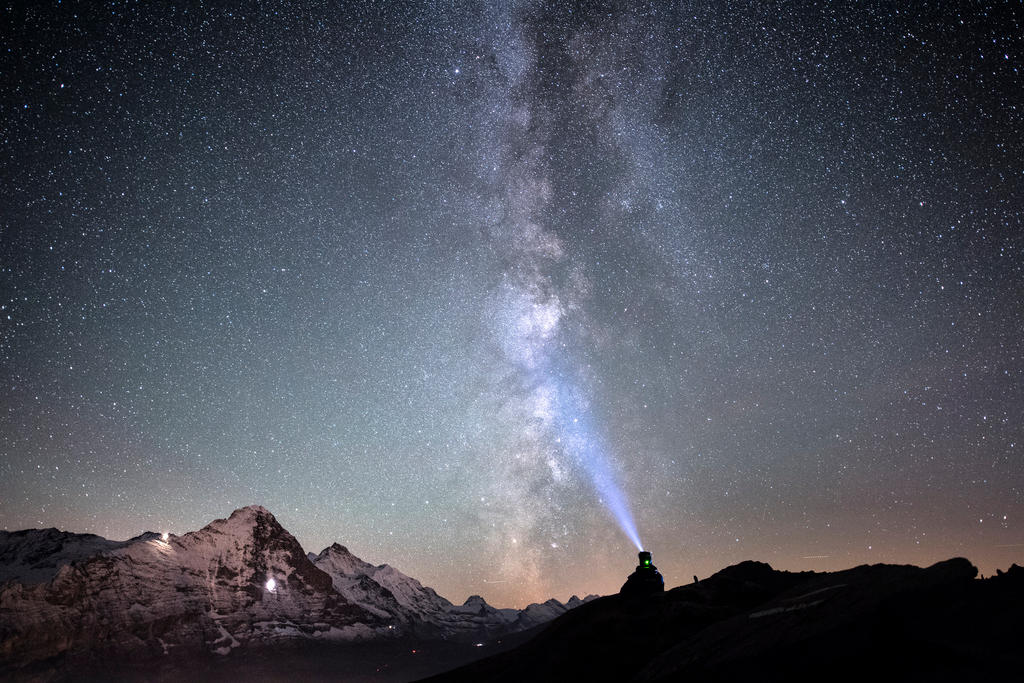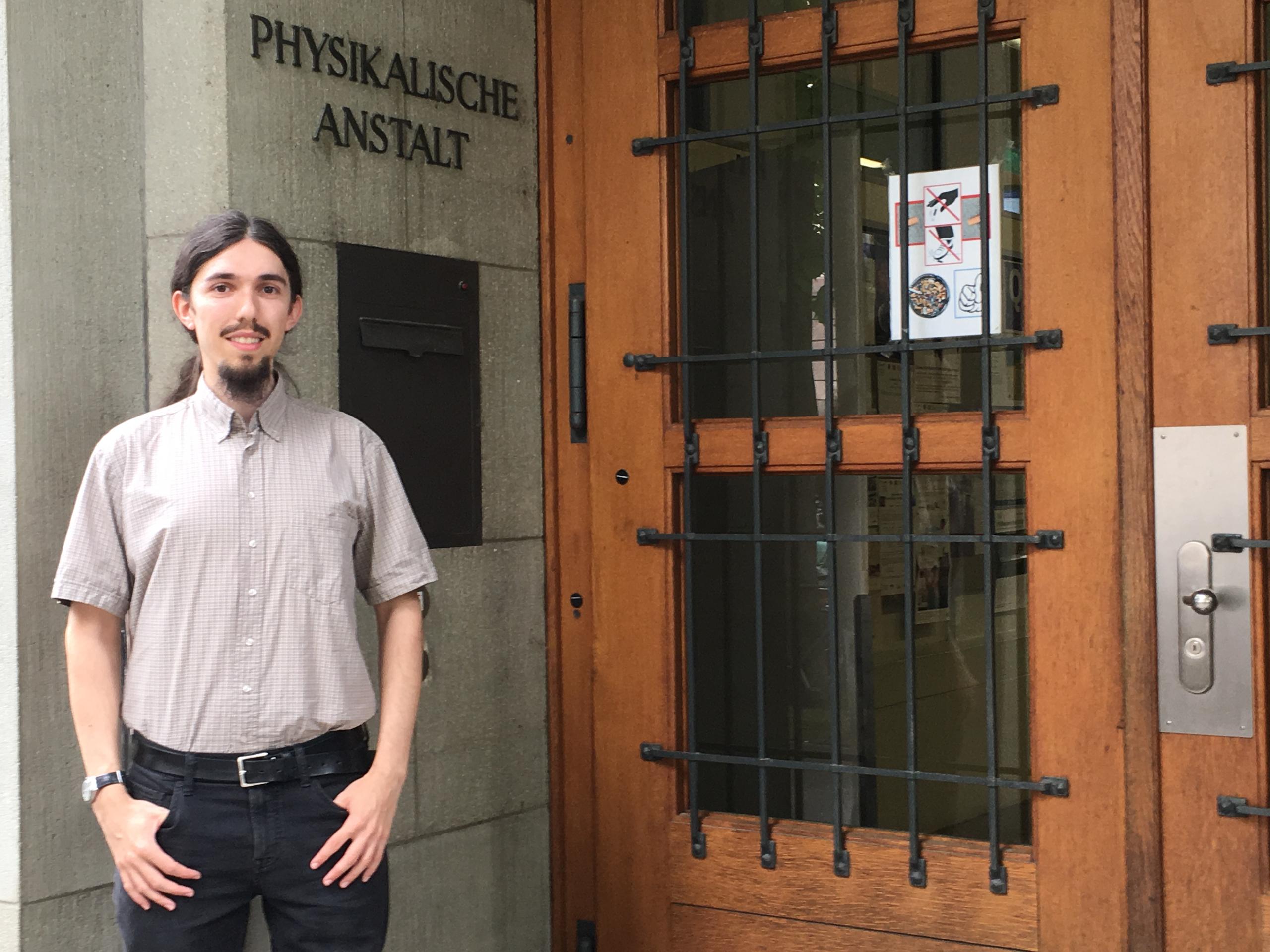
Research questions the fabric of our universe

Experts at two different Swiss institutions have recently published research that challenges the standard model of the cosmos and its properties. What does this mean for space…and for science?
For over a decade, André Maeder has been retired from his position as a professor in the University of Geneva’s Department of Astronomy, where his research focused on the physics of stars. But that hasn’t slowed his pursuit of cosmological conundrums.
In fact, he now has more time than ever to devote to the questions that have been bothering him since the very beginning of his career: questions like, “do we really need dark matter to help explain the universe?”

“I worked on this for a few years when I was a young assistant. But at that time, it wasn’t in the research line of the [Geneva] Observatory,” Maeder says.
He spoke recently with swissinfo.ch at the same Observatory, located in the bucolic Swiss plateau several kilometres outside the bustling city of Geneva.
Forty years later, science has moved on – and continues to change.
In November last year, Maeder published a paperExternal link that caused a stir in the scientific community: his research called into question the long-held assumption that the vast majorityExternal link of our universe is made up of dark matter and dark energy (see CERN for an explanation of dark matterExternal link).
Doing away with dark matter
Maeder’s hypothesisExternal link centres on a concept called the scale invariance of the empty space, which assumes that the properties of empty space do not change in response to an expansion or contraction.
In the Standard Model of CosmologyExternal link, the way the properties of empty space are accounted for in Einstein’s equations for gravitation does not allow for scale invariance, meaning that the equations would change with a general dilation or contraction of space-time.

More
Swiss researcher calls existence of dark matter into question
But Maeder proposes that these equations should be scale-invariant, which requires the addition of some new mathematical terms.
“Of course, I am biased, but I think this is a rather reasonable assumption: that where there is nothing, if you contract or [dilate the space], we expect nothing to change,” he summarises.
Using his revised, scale-invariant model, Maeder has conducted cosmological tests showing that certain galactic phenomena can be explained without dark matter. For example, galaxies that are part of a larger galaxy cluster have been observed to move faster than would be predicted based on their visible mass. Currently, invisible dark matter is proposed as the reason for these high speeds.
“For approximately 30 years, this has been the current view: that a huge fraction of our universe is formed by dark matter, which is six-to-eight times more abundant than visible matter,” he explains. “But within the context of [my] theory, there is no need of dark matter – it is just explained using the additional mathematical term in the equations of motion.”
Despite its publication in one of the field’s top journals, Maeder’s theory has been met with some opposition from the scientific community, including arguments that his work contains no “consistent theoryExternal link” as well as criticisms of the maths.
But Maeder remains undeterred, and says he plans to subject his theory to further tests – for example, to see whether his model can account for cosmological observations of helium left behind by nuclear reactions that occurred during the Big Bang.
Oddly orderly
The current formulation of the Standard Model of Cosmology – and the role of dark matter in particular – were again challenged in February, when Oliver Müller of the University of Basel, in collaboration with an international research team, published another status quo-questioning paper in the journal ScienceExternal link.
As part of his PhD thesis work, Müller had set out to conduct a survey of small satellite galaxies – known as dwarf galaxies – orbiting a larger galaxy called Centaurus A, some 13 million light-years beyond our own Milky Way.

But he and his colleagues noticed something strangeExternal link: the satellites seemed to be moving in the same plane and direction, in much the same way that planets in our own solar system orbit the sun.
That may not sound very surprising at first, but here’s the catch: The Standard Model in its current form predicts that, due to the effects of dark matter, satellite galaxies should move in a random, disordered way around Centaurus A – “like bees around a beehive”.
After comparing their observations to public datasets of cosmological simulations, Müller and his team found that their observations of Centaurus A’s satellites would be predicted only 0.5% of the time under the Standard Model.
What’s more, these satellite movements and alignments have been seen before – in the Milky Way and Andromeda galaxy groups – bringing the total number of galaxy systems exhibiting this unexpected pattern to three. The odds of that happening, Müller says, are one in 200 million.
“I’m an observer; I’m mostly interested in how the universe looks, so I can’t in the end decide if [the Standard Model] is correct or not – this has to be done by theorists. But I think there will be a change of paradigm,” he says.
Although busy preparing his PhD thesis, which he will soon submit and defend in August, Müller says he has plans to follow up the Science study. He wants to analyse more satellite dwarf galaxies in the Centaurus A galaxy group to see if they share the same movement and alignment patterns.
“For now, 14 out of 16 satellites share a common movement pattern. It’s highly unlikely that it is by chance, but of course it could be a statistical fluke. But if we have 27 out of 30 satellites still moving coherently, then we know: ok, this is physical,” he says.
And in a true spirit of scientific inquiry, he adds, “Or, [we could] rule out our observations – this is also very cool.”

In compliance with the JTI standards
More: SWI swissinfo.ch certified by the Journalism Trust Initiative































You can find an overview of ongoing debates with our journalists here . Please join us!
If you want to start a conversation about a topic raised in this article or want to report factual errors, email us at english@swissinfo.ch.